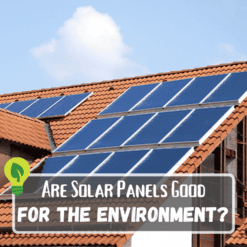
Solar is a clean energy source with tons of environmental benefits. When photovoltaic (PV) panels generate electricity, they offset carbon dioxide emissions with renewable energy.
But have you ever thought about how solar panels are made and disposed of, and the environmental effects of these processes?
Energy’s carbon footprint is a balancing act. Most of us have this idea that solar, wind, and hydropower are guilt-free sources. But that’s not quite the whole story.
Even green energy comes at a cost. So, let’s figure out the solar industry’s impact on the planet and whether they’re as environmentally friendly as we’re told.
How Are Solar Panels Good for the Environment?
Let’s start by talking about the benefits of using solar panels.
Solar power converts sunlight through photovoltaic panels, or mirrors. The energy produced is then used to generate electricity or heat. This energy can also be stored in batteries or solar thermal storage for use at a later time.
Most solar panels are made of silicon (the main part of natural beach sand). This is the second-most abundantly available element on Earth.
According to the International Energy Agency, renewable energy system generation reached an all-time high in 2021. It exceeded 8,000 TWh (even with the COVID-19 impact)—a record 500 TWh above 2020.
Solar panels protect air quality by harnessing the sun’s energy to generate electricity. They don’t produce greenhouse gasses, sulfur dioxide or nitrogen oxides.
From 1975 up to 2011, solar panels were a source of global greenhouse gasses. But in 2011, things changed. The solar industry stopped being a net source and began avoiding more emissions than it emitted—resulting in a net climate benefit.
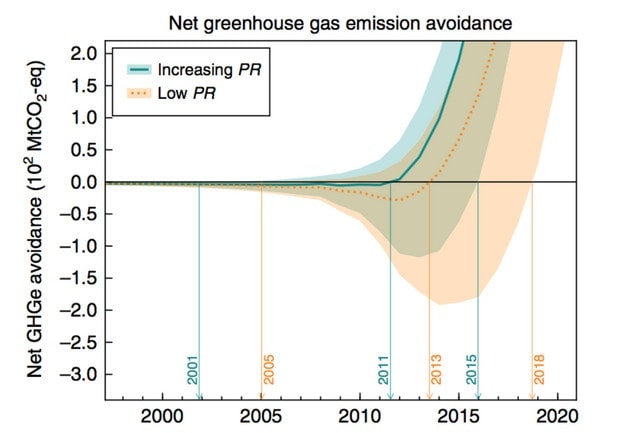
Image credit: Carbon Brief
Opinions on solar panels tend to align with age. 76% of Gen Z say they are more likely to purchase solar panels, while only 50% of those born from 1928-1945 and 58% of Baby Boomers agreed.
Power generation from solar PV increased by a record 179 TWh in 2021—22% more than 2020. It made up 3.6% of the world’s electricity generation and is the third largest renewable technology behind hydropower and wind.
Companies that invested in solar PV installations on their own buildings and locations were responsible for almost 30% of total installed solar PV capacity (as of 2021).
A utility-scale facility generates solar power and supplies it to an energy grid. In 2021, utility-scale plants accounted for 52% of increased global solar PV capacity. Residential added 28%, while commercial and industrial segments made up 19%.
Solar energy can reduce a homeowner’s carbon footprint by around one tonne per year (depending on where you live).
Government tax credits, rebates, and other incentives also reduce the cost of installing solar power in homes. Homeowners can also earn credits from their energy provider through net energy metering (NEM). Some states also give out Solar Renewable Energy Credits (SRECs) to homeowners using renewable energy. These can be sold to utility companies that want to meet their meet renewable portfolio standards (RPS).
What’s the Environmental Impact of Solar Panels?
All manufacturing generates a carbon footprint. Converting sand into high-grade silicon (polycrystalline silicon, commonly referred to as polysilicon) isn’t cheap and uses a lot of energy. This energy has to come from somewhere, and thus this process still uses fossil fuels.
Crystalline polysilicon for PV panels still holds a 95% market share as the most dominant technology. To produce these, polysilicon is melted at high temperatures to form ingots (blocks or cylinders of metal.) These are then sliced into wafers and processed into solar cells and modules.
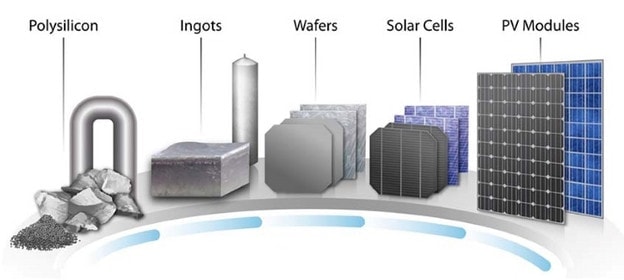
Image credit: NREL
Cadmium telluride (CdTe) photovoltaic is the only thin-film technology with lower costs than conventional solar cells (made of crystalline silicon in multi-kilowatt systems.)
Additionally, building the factories needed to meet local demand for battery components (including solar batteries) by 2030 would cost billions—around $149 billion in Europe and $113 billion in the US.
The solar PV manufacturing process is mostly powered by fossil fuels. However, solar panels only need to operate for 4-8 months to offset their manufacturing emissions. But that’s not the full story.
Carbon dioxide (CO2) emissions from solar PV manufacturing have almost quadrupled globally as production in China has expanded. However, solar PV manufacturing made up only 0.15% of energy-related global CO2 emissions in 2021. Coal accounted for over 40% of the overall growth.
The carbon footprint of an average solar photovoltaic (PV) system is roughly 14-73 grams of carbon dioxide equivalent (CO2e) per kilowatt-hour (kWh). The average of burning oil is 742 grams of CO2e per kWh.
Solar panel owners need to operate them for at least three years to balance out any CO2 they release into the atmosphere. After this, their overall carbon footprint drops into the negatives as they’ll have prevented more emissions from being released than producing them takes.
This chart shows how photovoltaics can contribute to greenhouse gas emission reductions of 55% in the EU by 2030:
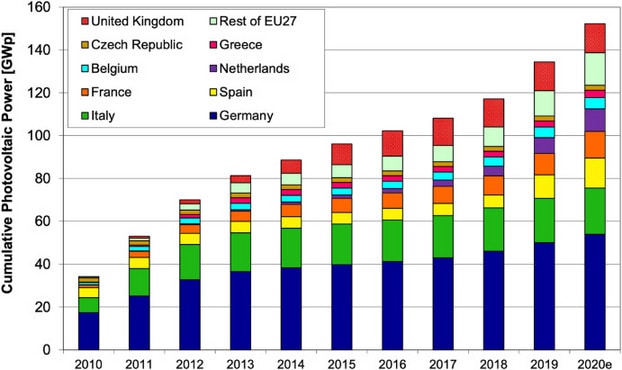
Image credit: ScienceDirect
Solar companies can develop plans to minimize negative environmental impact. Measures can be introduced that include protecting wildlife, improving soil health and water retention, or incorporating pollinator-friendly plants and bee hives.
Related Reading: How Much of the World’s Energy Comes From Renewable Resources?
Which Aspects of Solar Panels Are Bad for the Environment?
A handful of factors can make solar panels bad for the environment:
- Hazardous materials: Serious environmental and public health risks from chemicals like hydrochloric, sulfuric, and nitric acid that are all used to manufacture PV cells.
- Manufacturing: Where panels are produced, how far they are shipped and how they are disposed of.
- Land use: How much they degrade the soil or result in habitat loss depends on the site planning.
- Water use: Is the water used to construct components wasted or reused?

Image credit: GIPHY
Transporting accounts for only 3% of total PV carbon emissions. As global power systems decarbonize and supply chains diversify, the footprint of PV manufacturing could rapidly reduce.
High material prices and supply chain bottlenecks increased solar panel prices by around 20% over the past year.
More than 60% of the world’s panels come from Chinese solar companies. So, the majority of the global supply is releasing a huge amount of CO2e before they even start operating. (CO2e means the metric tons of CO2 emissions with the same global warming potential as the same amount of another greenhouse gas.)
It was estimated in 2016 that there was around 250,000 metric tonnes of solar panel waste globally. This is expected to grow to 9.57 million tonnes by 2050.
The carbon footprint of a panel depends on how the solar cells are produced. One of the major byproducts of making solar panels is silicon tetra-chloride, which turns into a particularly harmful substance known as hydrogen chloride when exposed to humid air. This can damage the environment and is potentially deadly to humans.
How Are Solar Panels Disposed Of?
Solar panels can be recycled, but it’s not an easy process. Existing PV recycling processes don’t bring in enough revenue from the recovered materials to cover the cost. That’s why panels aren’t currently systematically collected at the end of their lifetime—which is a major issue.
Here’s what the recycling process looks like, when they aren’t thrown in landfills:
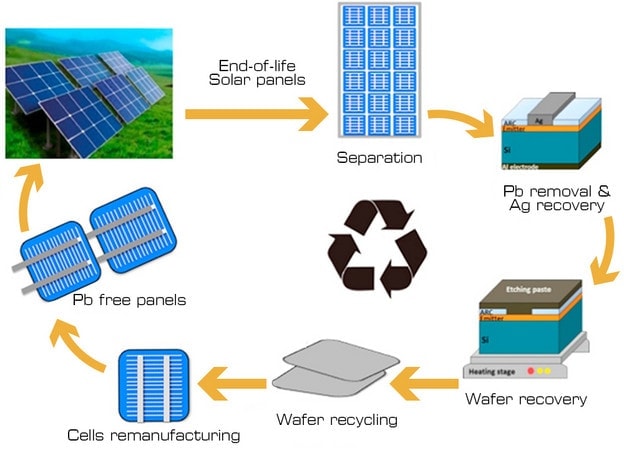
Image credit: Digital Journal
If they were recycled, supplies from recycling could meet over 20% of the solar energy industry’s demand for aluminum, copper, glass, and silicon. Plus, almost 70% of silver between 2040 and 2050.
By reusing these elements, we can decrease the greenhouse gas emissions of solar PV panels that contribute to climate change and global warming by 42%.
One study concluded that extending the lifespan of solar panel systems is essential to solving the emissions and waste challenges associated with their end-of-life disposal.
Only a minority of countries currently recycle panels—most end up in landfills and contribute further to air pollution. Only European companies are legally required to collect and recycle solar waste.
China has no proposals for recycling old cells. Most of the US is the same. In Australia, there are a number of recycling centers. However, most can only recycle 20% of the panels – the aluminum frame and the terminal boxes.
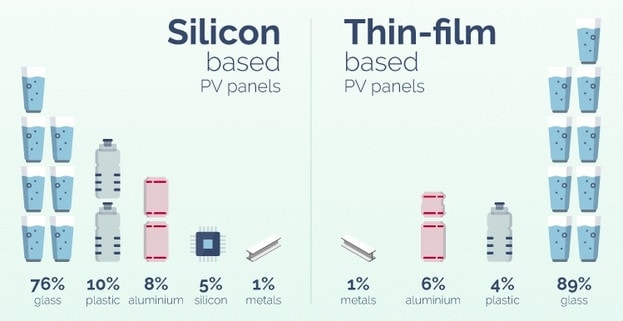
Image credit: GreenMatch
The global solar panel recycling market size was valued at USD 127.7 million in 2019 and is expected to grow 12.8% from 2020 to 2027.
| Market size value in 2020 | 160.8 million USD |
| Market volume in 2020 | 950.0 kilotons |
| Revenue forecast in 2027 | 333.8 million USD |
| Volume forecast in 2027 | 3193.5 kilotons |
The Dominance of China’s Solar Power Market
The five largest solar energy-producing countries in the world by installed capacity are:
- China
- United States
- Japan
- Germany
- India
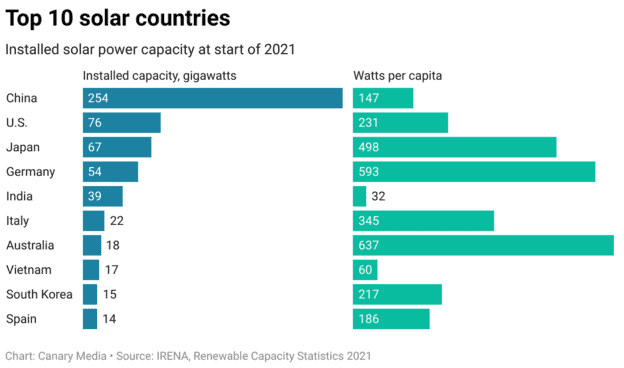
China had almost no solar panels 25 years ago. Now, they’ve got at least 100% more than any other country globally.
The top 5 largest solar power plants in the world are:
| Rank | Solar Park | Location | Installed Capacity |
| 1 | Bhadla Solar Park | India | 2245 MW |
| 2 | Huanghe Hydropower Hainan | China | 2200 MW |
| 3 | Pavagada | India | 2050 MW |
| 4 | Benban | Egypt | 1650 MW |
| 5 | Tengger Desert | China | 1547 MW |
The world’s largest floating solar park (320 MW) is built on a fish farm. Photovoltaic panels in China’s Dezhou Dingzhuang (“Solar Valley”) generate power while fish are farmed below.
China was responsible for around 38% of solar PV generation growth in 2021. The second largest (17% share of the total) was from the US, then the European Union (10%).
The world will almost totally rely on China to supply key building blocks for solar panel manufacturing through 2025. One out of every seven panels produced worldwide is created by one facility—a considerable vulnerability for any supply chain.
China’s share of global polysilicon, ingot, and wafer production will soon reach almost 95%. The Xinjiang province currently accounts for 40% of global polysilicon manufacturing.
China is the most cost-competitive location to produce all components of the solar PV supply chain. Costs there are 10% lower than in India, 20% lower than the US, and 35% lower than Europe.
How Do Solar Panels Measure Up Against Other Energy Sources?
Even with carbon capture and storage (CCS) technology, coal has 18x the carbon footprint of solar over its lifetime. Natural gas has 13x compared to solar.
A 2017 study published in Nature Energy found that renewable energy sources (solar, wind, and nuclear) all have much lower carbon footprints than fossil fuel-generated energy. This even includes “hidden” emissions sources like resource extraction, transportation, and manufacturing.
Here’s the life-cycle emissions from different electricity options:
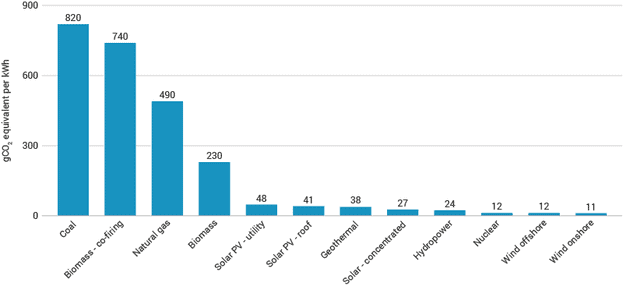
Image credit: World Nuclear Association
The amount of fossil fuels in the electricity mix depends on where the panels are manufactured. 64% of China’s electricity generation in 2020 was from coal (compared to 2.9% in the UK.)
The American Chemical Society extensively compared solar and fossil fuels and said: “Overall, all PV (solar) technologies generate far less life-cycle air emissions per GWh [gigawatt hour] than conventional fossil-fuel-based electricity generation.”
Investment in solar PV is expected to increase in the near future as it becomes the lowest-cost option for new electricity generation in most of the world.
According to an NREL study, generating 35% of electricity using solar and wind in the western US would reduce CO2 emissions by 25-45%.
All power plants and renewable energy components have a “useful life” before they need to be repaired or replaced. The useful lifespan of PV panels is between 25-40 years. Panels installed in the early 1980s are still performing at effective levels.
Solar farms normally take less than two years to build. Gas-fired power plants can take as many as four years to become operational as they may need to create gas pipeline infrastructure.
Is the Solar Industry Improving?
One of the most promising new solar energy technologies in development uses a material called perovskite. The structure of these crystals makes them very effective at absorbing sunlight. It’s also better at absorbing indoors and on overcast days than silicon. Thin films made from perovskite can even be painted on buildings.
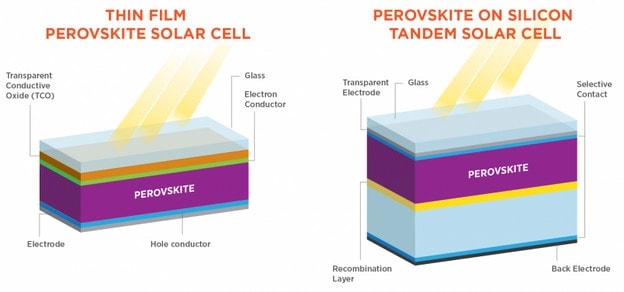
Image credit: U.S. Department of Energy
More efficient cell design (PERC) now has an almost 75% market share. While even higher-efficiency designs (using technologies such as TOPCon, heterojunction and back contact) expanded in commercial production and captured about 20% of the market in 2021.
The solar PV industry could create 1300 manufacturing jobs for each gigawatt of production capacity. New manufacturing facilities could attract 120 billion USD investment by 2030.
A solar photovoltaic installer is predicted to be one of the fastest-growing occupations in the US from 2021-2031.
Since 2011, continuous innovation by China (more efficient use of materials, energy, and low-carbon electricity production) has halved the intensity of solar PV manufacturing emissions.
China’s 2022 Five-Year Plan stated that 33% of electricity generation is to come from renewables by 2025 (up from around 29% in 2021). This includes an 18% target for wind and solar power.
In August 2022, the US introduced the Inflation Reduction Act—a law that significantly expands support over the next 10 years for renewable energy through tax credits and other measures.

Image credit: Statista
Solar power system grids need to be modified to be more flexible over time and integrate larger amounts to ensure they’re able to handle variability in demand.
So… Are Solar Panels Really Good for the Environment?
While solar power isn’t totally innocent, the good appears to outweigh the bad. Renewables generate more energy than it takes to produce them. Plus, they result in lower emissions than other power sources over their lifespan.
But if we want to see faster change, we’ll need to see substantial private sector investment in clean energy and changes in government policy around the disposal and recycling of panels.
If renewable energy is one of your passions, consider subscribing to our twice-a-month newsletter below. We never send spam emails—it’s full of tips to live more sustainably and suggestions for adventures to explore more of our beautiful planet.
Read Next: